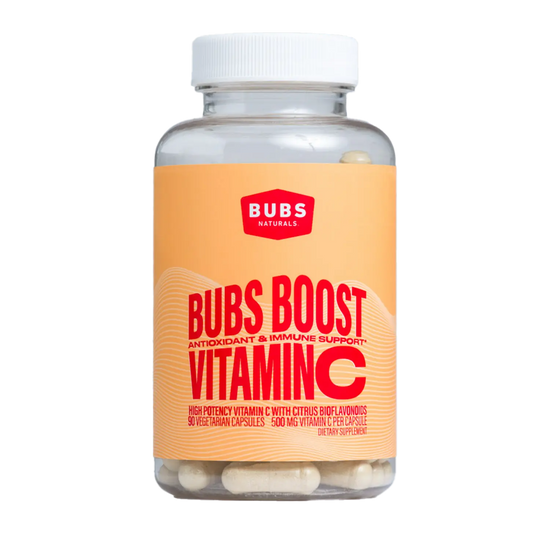Table of Contents
- Understanding Hair Color Basics
- Vitamin C: What Is It and How Does It Work?
- How Does Vitamin C Affect Hair Color?
- Methods for Using Vitamin C to Adjust Hair Color
- Conclusion
If you've ever dyed your hair and found that the results were far from what you hoped, you might be on the hunt for a solution that doesn’t involve harsh chemicals. Many people turn to natural remedies, and one popular option that has recently gained traction is vitamin C. But does vitamin C really take out hair color? This concept has sparked curiosity and claims about its effectiveness.
In this post, we’ll dive into the nuances of using vitamin C as a potential solution for lightening or removing hair dye. From understanding the chemistry behind hair color to practical applications of vitamin C, we’ll explore everything you need to know about this home remedy. Plus, we'll discuss whether it’s a one-size-fits-all solution or if there are conditions where it shines.
By the end of this blog, you’ll have a comprehensive understanding of how vitamin C interacts with hair dye, various methods to apply it, and precautions to consider. Let’s embark on this journey together and discover if vitamin C can help you refresh your hairstyle without the risk of damage!
Understanding Hair Color Basics
Before we discuss the role of vitamin C in hair color removal, we must first understand how hair dye works. Hair color products penetrate the hair shaft, altering the natural color pigments either by adding new color or removing existing pigments. These processes bond the dye to the hair, making it tricky to reverse without a specific treatment.
The Role of Hair Dyes
- Types of Hair Dye: Permanent, semi-permanent, demi-permanent, and temporary dyes employ different methods and formulas. Permanent dyes typically use ammonia and peroxide to open the hair cuticle and deposit color inside, whereas semi-permanent and temporary dyes rely more on surface adherence.
- How Color Binds: Dyes chemically bond with the hair’s keratin structure, which is why reversing the process requires a dedicated approach, as you can't simply wash it out like temporary dyes.
Vitamin C: What Is It and How Does It Work?
Vitamin C, or ascorbic acid, is a powerful antioxidant known for its numerous health benefits. Beyond its roles in immune support and skin health, there's a growing interest in its use for hair health, specifically regarding hair color.
Properties of Vitamin C
- Antioxidant Effects: Protects cells from oxidative stress and supports collagen production, which can amplify hair vitality but doesn't play a direct role in stripping color.
- Chemical Structure: The acidity of vitamin C has the potential to break down color molecules, especially those in semi-permanent dyes, making it a popular choice for at-home treatments.
How Does Vitamin C Affect Hair Color?
While vitamin C is not a miracle solution that will return your hair to its untouched state, it can play a role in lightening the hair color to some extent. Here’s how it may work:
- Fading Dyes: Vitamin C can help to fade hair color, particularly if it’s darker than your natural shade. This is particularly effective with semi-permanent and demi-permanent dyes due to their less aggressive bonding compared to permanent options.
- Breaking Down Color Molecules: The acid in vitamin C can help to dismantle some of the dye molecules, leading to a lighter shade, though complete removal is not guaranteed.
Limitations of Vitamin C for Hair Color Removal
- Not a Complete Solution: While it may lighten hair a shade or two, it cannot entirely reset your hair color, especially if you are trying to remove permanent dye.
- Variable Results: The efficacy of vitamin C can vary drastically depending on your hair type, the specific dye used, and how long it has been since your hair was dyed.
- Potential for Damage: Although vitamin C is gentler than many commercial products, overuse can lead to dryness and brittleness due to the stripping away of natural oils.
Methods for Using Vitamin C to Adjust Hair Color
Ready to give vitamin C a try? Here are some effective ways to use it for hair dye removal. Before starting any method, we recommend applying a patch test to check for any allergic reactions.
1. Vitamin C Paste Mask
A straightforward approach is to create a paste using vitamin C powder or crushed tablets mixed with a clarifying shampoo.
Ingredients:
- 1-2 tablespoons of vitamin C powder (ascorbic acid)
- A sufficient amount of dye-free clarifying shampoo
Instructions:
- Mix the vitamin C powder with the shampoo until it forms a thick paste.
- Dampen your hair and evenly apply the mixture from roots to ends.
- Cover with a shower cap and leave on for 30-60 minutes.
- Rinse thoroughly and follow with a deep conditioner to restore moisture.
2. Ascorbic Acid Rinse with Vinegar
Combining vitamin C with vinegar can enhance the cleansing process.
Ingredients:
- ½ cup apple cider vinegar or white vinegar
- ½ cup warm water
- 2 tablespoons vitamin C powder
Instructions:
- Dissolve vitamin C in the vinegar and warm water mixture.
- Apply it to damp hair, focusing on darker areas.
- Leave it on for 20-30 minutes before rinsing thoroughly.
3. Fresh Lemon Juice Application
Lemon juice is a traditional remedy known for its lightening effects, enhanced by vitamin C’s properties.
Ingredients:
- Juice from 2-3 fresh lemons
- Equal amount of warm water
Instructions:
- Dilute fresh lemon juice with warm water.
- Apply to damp hair, concentrating on the areas you wish to lighten.
- Leave it for 20-30 minutes before rinsing.
4. Baking Soda and Vitamin C Combo
This two-step process involves using baking soda to prepare the hair before applying vitamin C.
Step 1: Pre-Treatment with Baking Soda
- Mix equal parts baking soda and warm water to form a paste.
- Apply to damp hair for 15-20 minutes, then rinse.
Step 2: Follow-Up with Vitamin C Solution
- Prepare a mix of vitamin C powder and water (or vinegar).
- Application as in the previous methods, leaving it on for 15-20 minutes.
Key Considerations for Safe and Effective Use
- Monitor Hair Condition: Vitamin C can strip natural oils; always follow up with moisture-rich treatments like conditioners or hair masks.
- Use Moderately: Avoid excessive use; give your hair time to recover between sessions.
- Consult a Professional: If handling very dark or permanent dyes, consulting a stylist can provide safer, more predictable results.
Conclusion
Using vitamin C to adjust hair dye can be a natural, gentle remedy for lightening unwanted colors, particularly in cases of semi-permanent or dark dyes. However, it’s critical to maintain realistic expectations regarding outcomes and prioritize maintaining hair health through effective moisture restoration.
By understanding how vitamin C interacts with hair dye and applying it with careful consideration, we can embrace a more natural approach to hair care.
So, if you've recently faced an unwanted hair color situation, trying a vitamin C method might be worth your while—but remember, patience is key! Your hair will thank you for treating it with care and respect.
FAQ
Can vitamin C remove permanent hair dye?
Vitamin C can help lighten permanent hair dye but typically won’t remove it completely due to the bond dyes create with the hair.
How often can I use vitamin C on my hair?
It's recommended to allow your hair time to recover between applications, typically waiting a week or longer.
Is there a risk of hair damage with vitamin C?
While generally safe, overuse of vitamin C can lead to dryness and brittleness; therefore, deep conditioning is essential after treatment.
What should I do if the vitamin C method doesn’t work?
If results aren’t satisfactory, consider consulting a professional stylist for specialized products designed to remove hair dye without damage.
Are there alternatives to vitamin C for hair color removal?
Yes, other methods include baking soda, clarifying shampoos, and commercial color remover products; however, results can vary based on hair type and dye used.
Embrace the journey of finding solutions that work for you and let us know your experiences with these methods! Happy hair experimenting!
Written by:
Bubs Naturals

Vitamin C
Starts at $20.00
Shop

